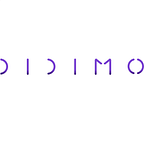The WFH generation. Are we the new normal?
COVID-19 has been the catalyst for a level of unprecedented change across the globe. It has provided unique challenges to companies large and small, as well as forcing many employees to embrace a new way of working — from home. In recent months we have seen the pandemic achieve what years of advocacy has failed to do: make telework a legitimate solution instead of a luxury to a relative handful of workers.
According to the 2019 National Compensation Survey (NCS) from the federal Bureau of Labor Statistics, only 7% of civilian workers in the United States had access to a “flexible workplace” benefit or telework pre-COVID-19. And those workers who had access to it are largely managers, other white-collar professionals and the highly paid. Telework is more common in some other countries than it is in the United States: a 2017 study of 30 European countries found that 23% of Danes, 21% of Dutch and 18% of Swedes worked from home “at least several times a month.” The lowest work-from-home rates in that sample, 6% in Bulgaria and Cyprus, were similar to the U.S.
With social distancing measures being the most impactful weapon to face the new coronavirus, an early-April 2020 MIT survey found that 34% of those who had been employed four weeks earlier said they are currently working from home. Combined with the roughly 15% who said they had been working from home since pre-COVID-19, that means nearly half of the U.S. workforce might now be remote working.
It’s hard to predict right now when the coronavirus crisis will end, and things will get back to “normal”. However, what does seem clear is that the normal may have been inexorably shifted, there will be a new normal and increased access to telework is almost certainly going to form a part of that: Microsoft is giving employees the option to work remotely through til October, while Facebook will let most of its workforce stay home until the end of the year with no plans to reopen offices globally before July, and Twitter has gone fully remote — just to mention some worldwide examples.
Even if the days of having all workers together in one place at the same time to respond are long gone, as a consequence of the XXI century globalization, the pandemic is forcing enterprises to use remote technology. As a result, and quoting the economist Susan Athey, we see a more permanent shift toward telecommuting. In a recent interview, published at Washington Post, she said, “people will change their habits, and some of these habits will stick. There’s a lot of things where people are just slowly shifting, and this will accelerate that.” With the same perspective, Cali Williams Yost, a flex work expert, argues that as a result of COVID-19, “work is forever changed” because “flexible work was made for times like these.”
To support this move toward a more dispersed workforce, technology is now at a stage of maturity that it can offer significant personal and social benefits. Additionally, this technology is largely available to anyone. The skeptics of this approach talk about the lack of productivity when working from home, but for us the most important missing factor is not a lack of productivity, but the loss of the human touch on our relationships. The lack of face-to-face contact and personal empathy was a cornerstone of worker interaction and socialization.
Lack of socialisation aside, some teams need to fundamentally group together in a 3-dimensional space, to review 3-dimensional things — product design, architecture, automotive design, engineering disciplines, space planners, etc. This challenge is being met by a huge acceleration in the adoption of ‘XR Collaboration’ tools, such as virtual, augmented and expanded reality, holographic display, 360 degree immersive video — Accenture’s 2017 report found that 27% of executives think it’s important for their organization to be pioneers in XR solutions as it is a new way to address problems around distance — there is still a huge gap in the representation of humans within these solutions.
Didimo enters this stage with its high-fidelity, flexible solution ready to be implemented by developers who are working in this field. XR tools as they exist will be more engaging once each person can see themself represented in a digital way. Unlike other commercial options for avatar creation, Didimo’s offer is highly animatable, making it perfectly positioned to capitalise on some interesting developments in the VR space related to facial tracking — Sony recently filed patents to support a next-gen headset with integrated facial tracking, and Facebook have also shown some prototype technology with Oculus headset, although they admitted the technology was ‘years away’. Didimo avatar technology is uniquely positioned to enable some of the core human attributes, such as visual appearance and animation, behavior, emotion, and voice into the next generation of social digital communication.
The pandemic has opened many people up to exploring alternatives to the established methods of interaction, changing routines and redefining many of our working practices. The WFH generation still needs to know each other and technology must help them to do that. A didimo can enhance products and solutions which are designed for this ‘new world’ of working from home, supporting collaboration, socialisation and productivity in these new mediums.
